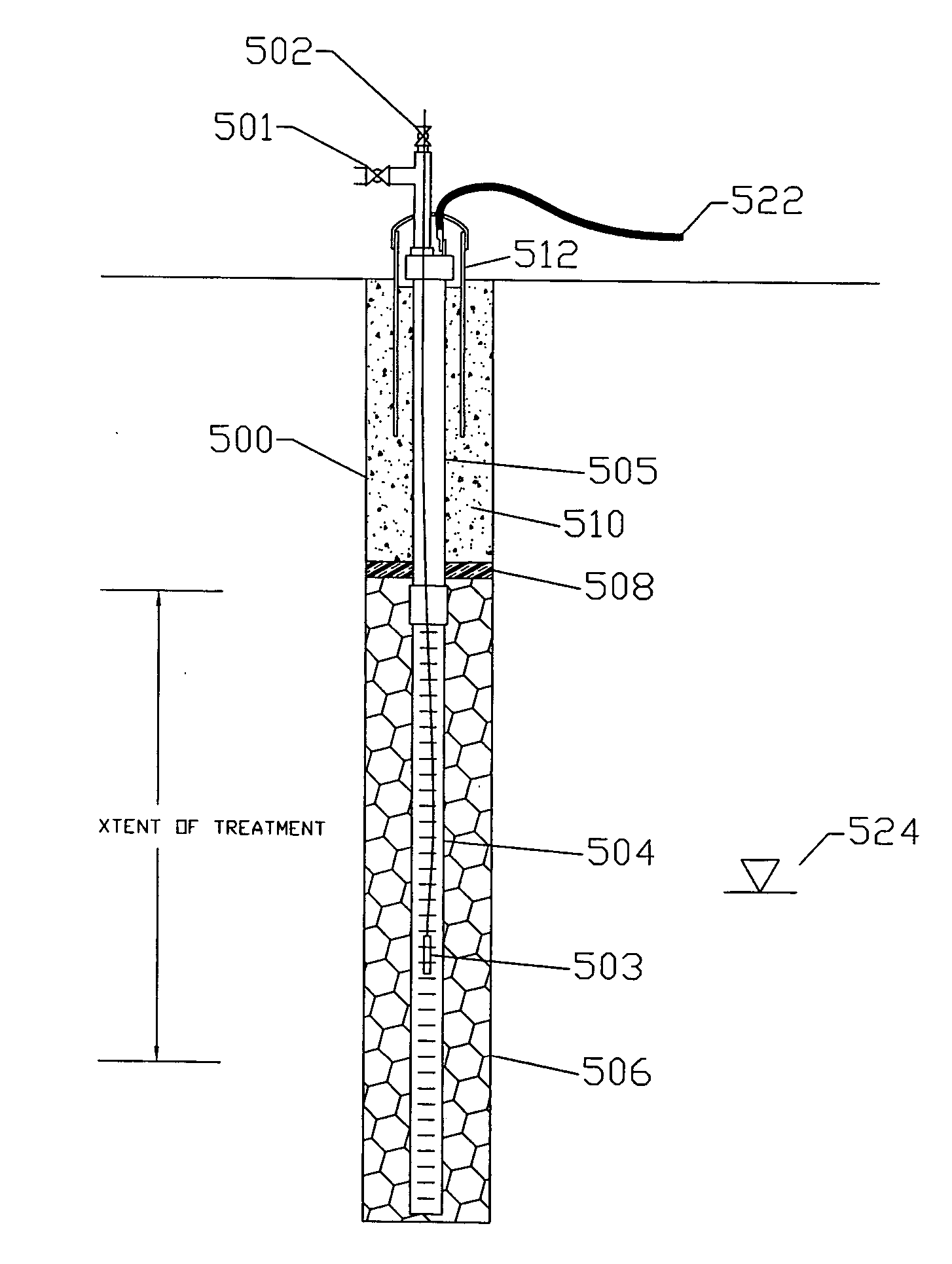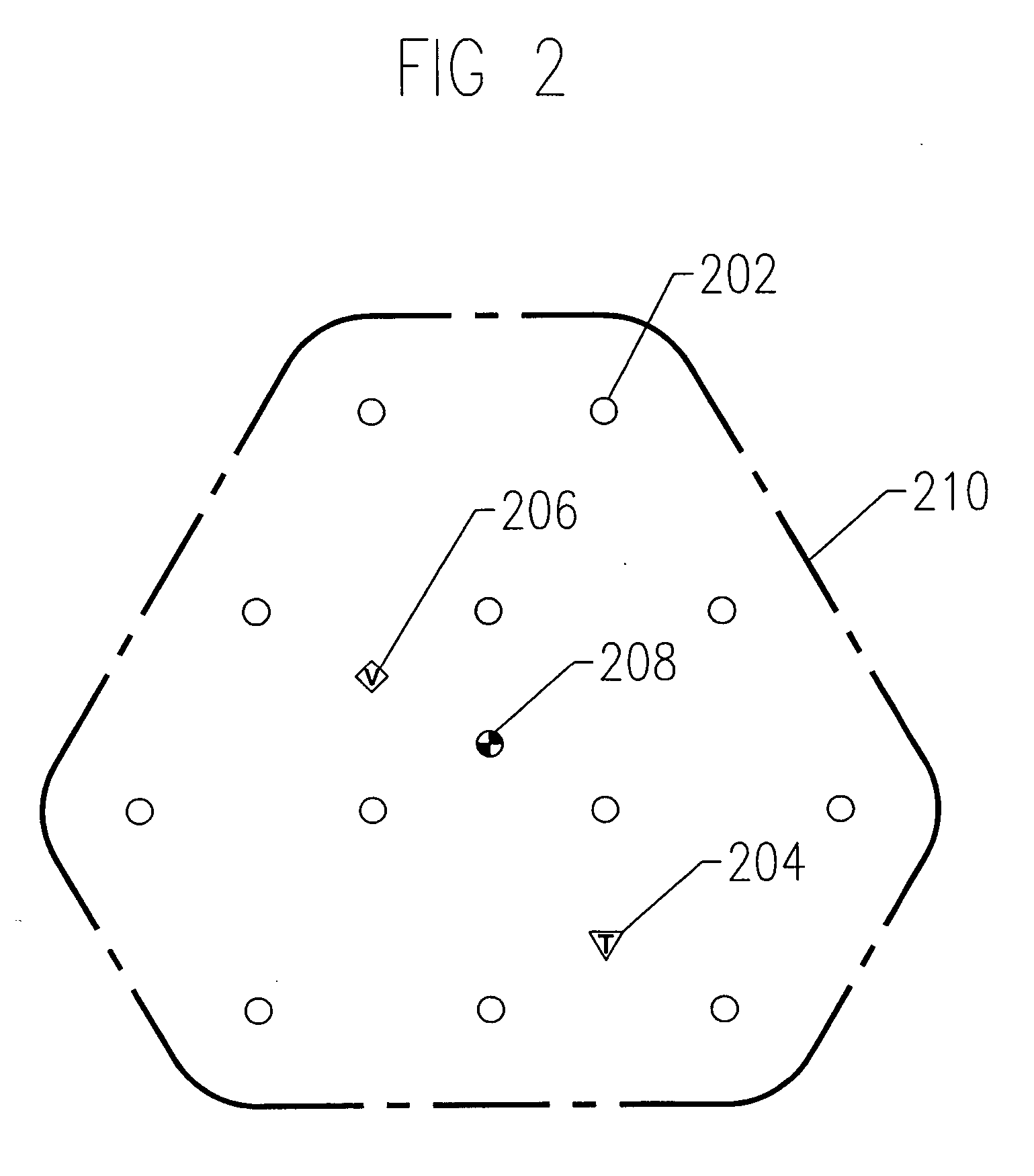Electrode heating with remediation agent
a technology of remediation agent and electrode, applied in the field of electrode heating with remediation agent, can solve the problems of unfavorable uniform heating of the subsurface, unfavorable halogenation of organic compounds, and unfavorable halogenation, etc., to achieve the effect of optimizing erh, improving electrode performance, and promoting remediation
- Summary
- Abstract
- Description
- Claims
- Application Information
AI Technical Summary
Benefits of technology
Problems solved by technology
Method used
Image
Examples
Embodiment Construction
[0022] ERH is optimized by improving electrode performance. Better electrode performance results if the conductive ions are continually produced within (or near) the electrode. Outward diffusion of these ions produces a concentration gradient that more closely approaches the theoretical ideal. From a mathematical sense, the diffusion of ions from an electrode and the “diffusion” of current are the same process—the shape of the current density curve and shape of the concentration gradient curve would be identical.
[0023] According to the present invention, conductive ions are continually produced in or near the electrode by adding an agent, such as a dehalogenation agent, or other contaminant decomposing agent, to cause or enhance the chemical or bio-chemical decomposition of one or more existing subsurface contaminants. Preferably the agent is introduced within two electrode radii from the outer surface of the electrode, more preferably within one electrode radii and most preferably...
PUM
 Login to View More
Login to View More Abstract
Description
Claims
Application Information
 Login to View More
Login to View More - R&D
- Intellectual Property
- Life Sciences
- Materials
- Tech Scout
- Unparalleled Data Quality
- Higher Quality Content
- 60% Fewer Hallucinations
Browse by: Latest US Patents, China's latest patents, Technical Efficacy Thesaurus, Application Domain, Technology Topic, Popular Technical Reports.
© 2025 PatSnap. All rights reserved.Legal|Privacy policy|Modern Slavery Act Transparency Statement|Sitemap|About US| Contact US: help@patsnap.com



